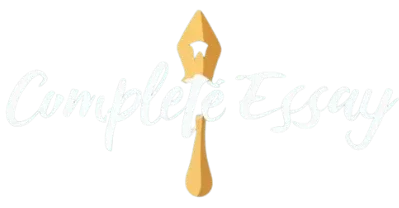Have you ever found yourself in the midst of writing an essay, staring at your screen, wondering, “Do I really need to use quotation marks for this sentence from my textbook?”
It’s a common dilemma that many students face when incorporating information from their course materials into their writing. The rules around using quotations can sometimes feel like a maze, leaving you unsure about when to use them and when it’s okay to skip them.
Fear not, as we delve into this quotation conundrum in simple terms to help you confidently navigate the world of academic writing.
Let’s demystify the art of quoting from textbooks and make your essays not only academically sound but also a breeze to write!
Contents
- 1 What Is the Purpose of Using Quotations in Your Essay?
- 2 How to Find Appropriate Quotations for Your Essay
- 3 How to Introduce Quotations in Your Essay
- 4 How to Use a Signal Phrase When Quoting a Textbook
- 5 How to Use Ellipses to Shorten Quoted Material
- 6 Tips for Writing Quotations in an Essay
- 7 Conclusion:
- 8 FAQs
- 8.1 Do I always need to use quotation marks when including a sentence from a textbook in my essay?
- 8.2 What if I’m paraphrasing the information instead of using the exact words? Do I still need quotation marks?
- 8.3 How do I cite a textbook in my essay?
- 8.4 Can I use information from a textbook without citing it?
- 8.5 What if I’m using multiple sentences from the same textbook page? Do I need to include the page number each time?
- 8.6 Do I need to use a block quotation for longer passages from a textbook?
What Is the Purpose of Using Quotations in Your Essay?
One of the most common questions students ask about writing an essay is how to incorporate quotations into their work. Quotations are a great way to add support and expert opinion to your writing, but there are a few rules you need to follow in order to use them effectively.
The first and most important rule to remember is that your essay should be your own work. This means that you should only use quotations when you are absolutely sure that they add value to your argument. Never use a quotation just for the sake of it – if it doesn’t help to support your point, leave it out.
When you do use quotations, make sure that they are integrated smoothly into your text. This means that the reader should not be able to tell that a quote has been used.
The best way to achieve this is to introduce the quote with a short sentence of your own, which explains its relevance to your argument. For example, In his book on the history of the Second World War, John Smith argues that ‘the war was not inevitable’.
Notice how in this example, the quoted material is introduced with a short sentence which makes it clear how it relates to the argument of the essay. It is also important to use punctuation correctly when introducing a quotation. The full stops and commas go after the closing quotation mark, not before it.

Once you have introduced the quotation, you need to explain why it is important. This means analysing how the quotation supports your argument. Remember to do more than just list the points that the quotation makes – you need to critically engage with it, considering its implications and interpretation.
Finally, make sure that you reference all of the sources you use in your essay correctly. This includes both the sources of your quotations and any other sources you have used to inform your writing.
Depending on the referencing system required by your institution, you will need to include different information in your references. However, in all cases, you should include the author’s name, the title of the work, the date of publication and the page number (if applicable).
Using quotations in your essay is a great way to add weight to your argument. However, make sure that you follow the rules discussed above in order to avoid plagiarism and get the most out of your quotes.
How to Find Appropriate Quotations for Your Essay
When you are writing an essay, there are often times when you need to use a quotation from a textbook. If you are not sure how to find appropriate quotations for your essay, there are a few tips that you can follow.
First, make sure that you are using quotations for the right reasons. Quotations should be used to support your argument or to provide evidence for your point. They should not be used simply to fill up space in your essay.
Second, try to find quotations that are short and to the point. The last thing you want is to have a quotation that is longer than your own sentence. When in doubt, it is always better to err on the side of shorter quotations.
Third, make sure that you introduce the quotation in your own words. This will help to ensure that the quotation is properly integrated into your essay. Simply starting a quote with “The author says” is not enough. You need to provide some context for the quote.
Fourth, be sure to properly cite the source of the quotation. This means that you will need to include the author’s name, the date of publication, and the page number where the quotation can be found. Failure to properly cite your sources can result in plagiarism.
By following these tips, you can be sure that you are using quotations from your textbook effectively in your essay. Do not be afraid to use quotations, but make sure that you are using them correctly.

How to Introduce Quotations in Your Essay
When you include a quotation in your essay, you must first introduce the quotation. Do you use quotations for when you use a sentence from a textbook in your essay? The answer is yes. Introducing your quotation is important because it helps your reader understand what your quotation is saying and how it relates to your argument.
There are a few different ways to introduce a quotation in your essay. You can use a signal phrase, which is a phrase that signals to your reader that you are about to quote someone. For example, you might use a signal phrase such as “According to Smith,” before quoting Smith in your essay.
You can also introduce your quotation with a full sentence. This is helpful if you are quoting a particularly long or complex passage. For example, you might write a full sentence such as “The following passage from Smith’s article provides evidence for my claim.”
Once you have introduced your quotation, you will need to explain why you are including it in your essay. What is this quotation saying that is important or relevant to your argument? This is where you will need to do some analysis.
Including a quotation in your essay is not just a matter of copying and pasting. You need to make sure that you are introducing and explaining your quotation in a way that makes sense in the context of your argument.
How to Use a Signal Phrase When Quoting a Textbook
When you’re writing an essay, it’s important to use quotes from reliable sources to support your claims. Textbooks are a great source of information, so you may find yourself wanting to quote from one in your essay. signal phrase can be a great way to introduce a quote from a textbook.
A signal phrase is a phrase that introduces a quote. It can be used to help the reader understand who is speaking and why they are saying what they’re saying. For example, if you were to quote a character from a book, you might use a signal phrase like, “As John said,” to introduce the quote.
When you’re quoting from a textbook, you can use a signal phrase to introduce the quote and give some context for it. This can be helpful if the quote is long or complex. It can also be helpful to use a signal phrase when you’re quoting an expert on a topic. For example, you might use a signal phrase like, “As Jones explains in her textbook,” to introduce a quote from a textbook.
Here are some tips for using signal phrases:
1. Choose a signal phrase that makes sense for your quote.
2. Use a signal phrase to introduce the quote, but don’t overdo it. A few signal phrases per essay is probably enough.
3. Make sure the signal phrase introduces the quote clearly. Avoid using phrases like “and then he said” or “she wrote.”
4. Use signal phrases to attribute long or complex quotes. If the quote is short and simple, you might not need a signal phrase.
5. If you’re unsure about whether or not to use a signal phrase, err on the side of caution and use one. It’s always better to be clear than to be confusing.
Do you use quotations for when you use a sentence from a textbook in your essay? If so, what are your thoughts on using signal phrases? Let us know in the comments!

How to Use Ellipses to Shorten Quoted Material
If you’re quotes are more than four lines long, you may want to shorten them using ellipses. Ellipses are three periods (…) that take the place of omitted material in a quoted passage. Here’s how to use ellipses to shorten quoted material:
First, decide which part of the quote you want to omit. You can omit material from the beginning, middle, or end of the quote.
If you omit material from the beginning of the quote, use ellipses after the first sentence. For example,
The original quote:
“There is no Frigate like a Book
To take us Lands away.”
becomes
“There is no Frigate like a Book…
To take us Lands away.”
If you omit material from the middle of the quote, use ellipses in place of the omitted material. For example,
The original quote:
“I cannot live without books.”
becomes
“I cannot live without…books.”
If you omit material from the end of the quote, use ellipses in place of the omitted material. For example,
The original quote:
“I am not afraid of storms, for I am learning how to sail my ship.”
becomes
“I am not afraid of storms…for I am learning how to sail my ship.”
Remember, when you use ellipses to shorten a quote, be sure to include ellipses at the beginning, middle, or end of the quote as appropriate.
Tips for Writing Quotations in an Essay
If you’re including a quote in your essay, make sure to use proper punctuation and introduce the quote with a signal phrase. A signal phrase includes the author’s name and sometimes the publication date. For example, you might write, “According to Henry James, ‘There is nothing so fatal to character as half-completed actions'” (James 16).
If you’re quoting prose, use a comma to introduce the quote; if you’re quoting poetry, use a colon. For example, you might write, “In ‘The Waste Land,’ T.S. Eliot writes, ‘I will show you fear in a handful of dust'” (Eliot 23-24).
If you’re quoting more than three lines of poetry, indent the quote and do not use quotation marks. For example,
T.S. Eliot writes in “The Waste Land”:
I will show you fear in a handful of dust.
Fearful when I hear
The wind in the chimney cry.
When you’re done introducing the quote, set off the quote with quotation marks.
If you’re quoting from a source that doesn’t have page numbers, you can include other information that will help readers find the quote. For example, you might write, “In ‘The Waste Land,’ T.S. Eliot alludes to Shakespeare’s Macbeth when he writes, ‘Andventions of our einen / That burn like the tochas of hell'” (Eliot l.430-432).
If you want to omit part of a quoted sentence, use ellipses (…). For example, you might write, ” According to James, ‘There is nothing so fatal to character as half-completed actions.’ However, we don’t always have to finish what we start” (James 16).
If you need to change something in a quoted sentence to make it fit grammatically with the rest of your sentence, use brackets around the change. For example, you might write, “In ‘The Waste Land,’ T.S. Eliot writes that the world is a ‘heap of broken images’ that we try to mend” (Eliot 22).

Conclusion:
In conclusion, do you use quotations for when you use a sentence from a textbook in your essay? The answer may surprise you. While there are certain instances where quoting from a textbook can be appropriate, in general, it is best to avoid using quotations from textbooks in your essay.
The main reason for this is that using quotations from a textbook can often make your essay sound choppy and difficult to read.
Additionally, if you are using quotations from a textbook in your essay, it is important to make sure that you cite the source correctly. Failure to do so can result in plagiarism.
FAQs
Do I always need to use quotation marks when including a sentence from a textbook in my essay?
Yes, in most cases, it’s essential to use quotation marks. This helps clearly indicate that the words belong to the author of the textbook and not you.
What if I’m paraphrasing the information instead of using the exact words? Do I still need quotation marks?
No, if you’re paraphrasing, you don’t need quotation marks. However, it’s crucial to properly cite the source to give credit to the original author.
How do I cite a textbook in my essay?
Follow the citation style specified by your instructor (APA, MLA, Chicago, etc.). Typically, include the author’s name, the title of the textbook, the publication year, and the page number.
Can I use information from a textbook without citing it?
No, always cite your sources. Failing to do so can lead to plagiarism, which is a serious academic offense. Proper citation gives credit to the original author and strengthens the credibility of your essay.
What if I’m using multiple sentences from the same textbook page? Do I need to include the page number each time?
No, you can include the page number after the last sentence from that page. This informs the reader that all the information on that page is from the same source.
Do I need to use a block quotation for longer passages from a textbook?
It depends on the length. If the passage is four lines or longer in most styles, consider using a block quotation. Check your citation style guide for specific rules.







